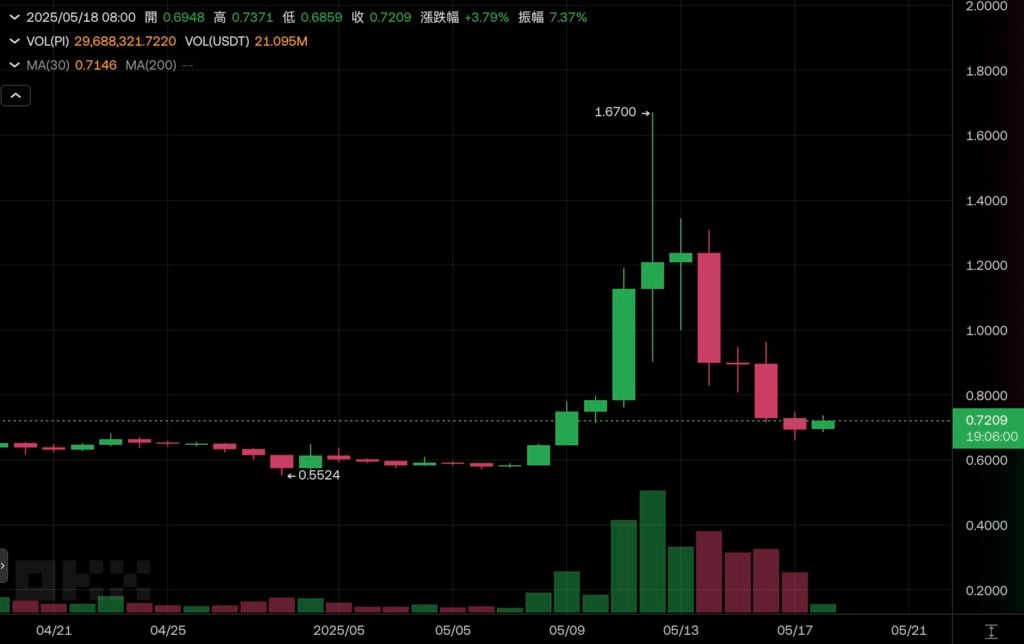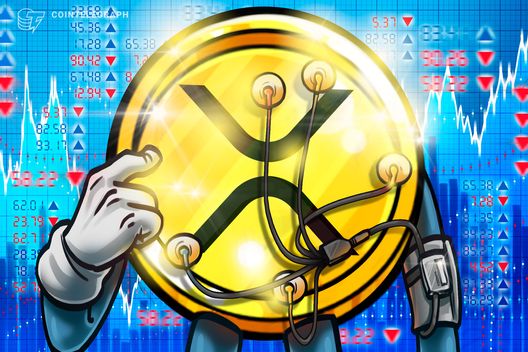Pi Network, which started with "mobile mining," finally opened its mainnet and was listed on multiple well-known exchanges after waiting for over six years on February 20 this year.
The Pi coin price approached $3 within a week of going online, but then continuously dropped. After entering April, it oscillated in the $0.6 range for over a month, until mid-May when rumors spread that Pi Network would make a major announcement at the recently concluded Consensus 2025 conference, which reignited the price and briefly touched $1.67.
Community Expectations Fall Short, Pi Coin Price Halved
Pi Network's massive user community had extremely high expectations for the event, with many anticipating an announcement of large-scale decentralized applications (dApps) to expand the currently barren ecosystem.
However, the core team's major announcement of establishing Pi Network Ventures - a $100 million ecosystem fund aimed at supporting builders within the Pi ecosystem - significantly deviated from community expectations, quickly spreading disappointment. X user Dr Altcoin wrote:
After six years of dedication, mining, promotion, and waiting, pioneers expected a thriving ecosystem. However, we learned that most of the promised 100 DApps are not yet realized, and now we will use $100 million to build them
Another community user sarcastically noted that Pi Network Ventures' $100 million ecosystem fund is being collected through a Google form, which is a "Big Shame" for a project that has been building for six years with ambitious goals.
The community's disappointment is reflected in the coin price, with Pi dropping over 60% from its peak, currently trading at $0.72 at the time of writing.

Future Outlook and Path to Rebuilding Trust
Of course, the Pi official team also outlined some technical development directions at the Consensus 2025 conference, such as planning AI tools, exploring DePIN applications, and promoting a network upgrade called "Horizon". Pi Network co-founder Dr. Nicolas Kokkalis also stated that the network's centralized nodes have been removed, paving the way for more comprehensive decentralization.
However, these actions clearly cannot satisfy the massive community's expectations in the short term. If Pi Network hopes to successfully emerge from its current trust quagmire and move towards a grander vision, adopting a more open and transparent communication strategy, actively and effectively responding to the community's reasonable concerns, and demonstrating its operational fairness and transparency through concrete actions and verifiable progress has become an urgent task.







